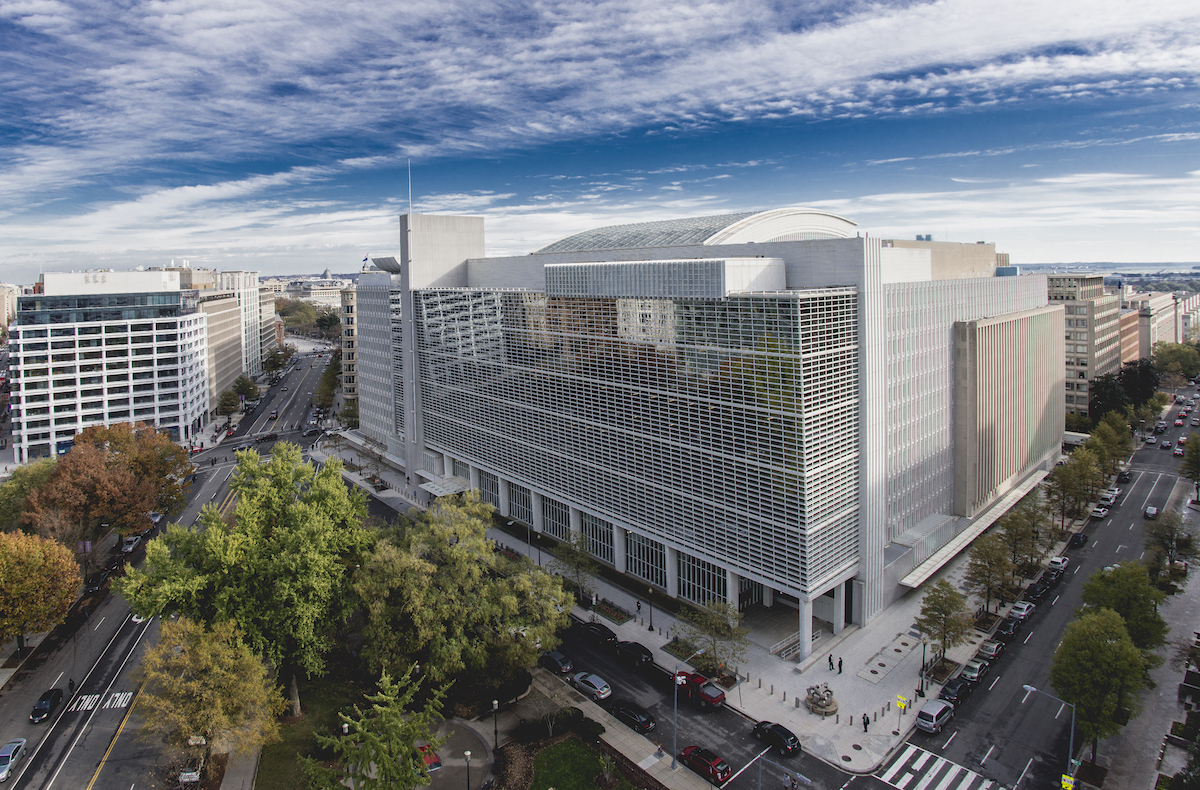The likelihood of capital increase for the World Bank’s non-concessional lending arm, the IBRD, appears to be climbing. At least an odd European government appears to be doing some preparatory work for it. But any negotiations around a capital increase may be complex. Large shareholders and borrowers hold conflicting positions, and shareholders are divided amongst themselves. That suggests the potential advantage of changing what the negotiation is over.
Conflicting positions
Developing countries as a group want a bigger World Bank, but they also want a larger say in the way the institution is run. Especially if the Bank moves further into climate finance, that’s a reasonable request—after all, the finance is needed to fix a problem largely created by rich countries, most of whom should be providing a lot more climate finance.
The US will doubtless try to hold on to its current veto power with a death grip. Along with Europe, it will be concerned about giving China a larger influence. And the Europeans would prefer to preserve their own outsized voting share. China, meanwhile, wants (and is willing to pay for) a capital and voting share that better reflects its share of the global economy (just to note, compared to the US and European positions, this seems a comparatively reasonable ask).
There’s lots of scope to change capital share and voting formulae—they’ve always been a process of negotiation, and past capital increases have seen the proportion of shares needed for a veto fall and the proportion of ‘basic votes’ issued to each country regardless of capital share rise, for example. But there do seem to be some fairly unavoidable tradeoffs when it comes to starting positions.
Perhaps countries who want a larger vote share due to their relative economic size or based on equity considerations will be willing to shelve those demands in the interests of greater international finance for development and climate, and would accept a capital increase using current capital shares (perhaps especially with reforms to make it easier to use World Bank funding thrown in). If not, things get more complex.
Potential (non-)solutions
Compared to economic weight (in this case, a simple average of market and PPP GDP), China’s vote share is less than a third of what it should be –six percent rather than 19 percent. The US is in fact under-weighted too, by nearly four percentage points. India also deserves a larger vote share on this measure. But a bunch of European countries, Saudi Arabia and Japan are over-weighted: the UK and France both have a 3.9 percent vote share, it should be closer to 2.7 percent.
One way to meet the demands for greater equity of representation is to increase the basic vote share unconnected to capital contributions. A straightforward rise in the minimum vote for every member country would increase the influence of smaller poorer economies at the expense of the larger shareholders, including those in Europe, Japan, the US, Saudi Arabia, India, and China. Combine the two approaches: imagine the share of basic votes was increased from 5.5 to 20 percent of the total, and shareholding moves halfway toward a fairer representation of the global economy. The result would still be a far larger vote share for China and major losses for Europe, Japan, and Saudi Arabia (the US vote share would remain about where it is).
What about the idea of giving vote shares to countries with a large portfolio of IBRD debt? The five largest obligations for IBRD loans outstanding are held by China, Mexico, Brazil, Indonesia, and India. They would be likely to benefit in terms of vote shares compared to both donor and smaller developing countries.
Or in a variant of the dual governance idea that Nancy Lee and Mauricio Cardenas have discussed for an multilateral development bank oversight body, IBRD votes could be allocated using two formulae: one around capital contributions, the other around a measure of the share of development challenges: perhaps the proportion of the population of IBRD borrower countries living on below global median income. Any such system would necessarily reduce donor country shares and, at least until China graduates from the IBRD, would be likely to increase China’s vote share.
Combining vote formulae?
Currently, IDA (the Bank’s concessional lending arm) and the IBRD have different vote share calculations. That’s actually a little odd. There is not a separate cafe for people working on IDA projects, nor a separate pension regime. IDA and IBRD board representatives are the same people. The institutions share the same president, leadership, and staff. They follow the same procurement and safeguards rules, they use the same project preparation system, and the same independent evaluation group puts out cross-cutting reports on both. The considerable majority of board votes on anything but individual projects affect IDA and IBRD equally. So, why not use the same vote formula for both?
IBRD equity is about $50.5 billion. IDA equity is about $179 billion. Imagine merging the vote share formula, using each institution’s current formula at a rate of three IDA votes to each one IBRD vote. IDA’s capital is based on voluntary contributions rather than general capital increases, and vote share therefore fluctuates far more on the basis of which donors pledge the most resources. Because of a history of contributions to IDA, the UK vote share in IDA is 6.9 percent compared to 3.9 percent in IBRD, for example. European countries and Japan, alongside IDA recipients, would see their vote share end up higher than their current IBRD vote share but lower than their IDA share.
Go further, and make the voting formula 25 percent of economic weight (and a related capital commitment), 75 percent current IDA formula. Under this regime, China’s vote share is around six percent, similar to its IBRD vote share, but the voting system more fairly reflects its economic weight. European donors who have been generous to IDA (still) see their vote share end between those IDA and current IBRD levels. The US share does fall by three percentage points and doubtless one part of the negotiations would involve making the veto share ten percent.
The Asian Development Bank has gone all of the way to merging its concessional and non-concessional lending arms. Financially, merging IDA and IBRD balance sheets may not make as much sense. And formally merging them would likely require changing a treaty. Thankfully, that process isn’t necessary simply to link the voting formulae of the institutions. Again, mixing the two balance sheets at least for the purpose of vote share would give IDA recipients less control over IDA resources and more control over IBRD resources than they have at present. It would also shift more power from IBRD borrowers to large IDA donors. These features aren’t necessarily attractive, and the reality is that any new joint voting formula would require significant negotiation. Still, on the plus side, any such formula would likely have the attractive feature of encouraging larger donations to IDA.
Perhaps this time around, especially if it involves lending reforms, the US and Europe can get away with proposing a capital increase that doesn’t change vote shares (and that is what the US is already proposing when it comes to expanding the IMF). But at some point, an IDA-IBRD merger, at least in terms of voting share, might create needed negotiating space to allow for a larger institution. With the three levers of moving toward global economic share for IBRD capital contributions (of benefit to China India and the US), increasing basic votes (of benefit to smaller economies) and counting IDA contributions (of benefit to Europe and Japan), there is more potential to calibrate the voting mechanism to global political realities. This would all be in part a questionable exercise of further prolonging the excess control of a few rich countries in the governance of the World Bank, but at least it would hopefully also serve in part as a tool to win more resources to tackle the urgent development problems of the world’s poorest countries.
Thanks for helpful, insightful, and skeptical comments from Nancy Lee and Clemence Landers.
Disclaimer
CGD blog posts reflect the views of the authors, drawing on prior research and experience in their areas of expertise. CGD is a nonpartisan, independent organization and does not take institutional positions.
Image credit for social media/web: F&J McGinn / Adobe Stock







